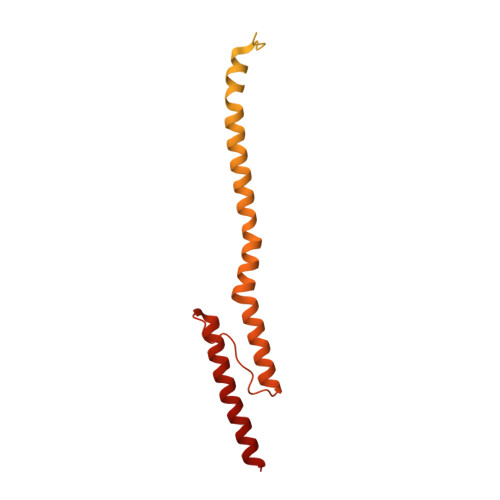A Soluble Mutant of the Transmembrane Receptor Af1503 Features Strong Changes in Coiled-Coil Periodicity.
Hartmann, M.D., Dunin-Horkawicz, S., Hulko, M., Martin, J., Coles, M., Lupas, A.N.(2014) J Struct Biol 186: 357
- PubMed: 24568954
- DOI: https://doi.org/10.1016/j.jsb.2014.02.008
- Primary Citation of Related Structures:
4CQ4 - PubMed Abstract:
Structures of full-length, membrane-bound proteins are essential for understanding transmembrane signaling mechanisms. However, in prokaryotic receptors no such structure has been reported, despite active research for many years. Here we present results of an alternative strategy, whereby a transmembrane receptor is made soluble by selective mutations to the membrane-spanning region, chosen by analysis of helix geometry in the transmembrane regions of chemotaxis receptors. We thus converted the receptor Af1503 from Archaeoglobus fulgidus to a soluble form by deleting transmembrane helix 1 and mutating the surface residues of transmembrane helix 2 to hydrophilic amino acids. Crystallization of this protein resulted in the structure of a tetrameric proteolytic fragment representing the modified transmembrane helices plus the cytoplasmic HAMP domain, a ubiquitous domain of prokaryotic signal transducers. The protein forms a tetramer via native parallel dimerization of the HAMP domain and non-native antiparallel dimerization of the modified transmembrane helices. The latter results in a four-helical coiled coil, characterized by unusually large changes in helix periodicity. The structure offers the first view of the junction between the transmembrane region and HAMP and explains the conservation of a key sequence motif in HAMP domains.
Organizational Affiliation:
Department of Protein Evolution, Max-Planck-Institute for Developmental Biology, 72076 Tübingen, Germany.














